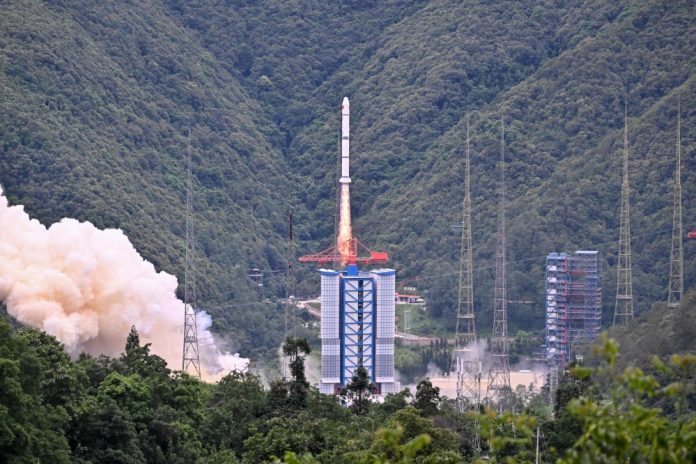The satellite, jointly engineered by China and France, lifted off into orbit, China’s state broadcaster CCTV reported.
On Saturday, China launched the astronomical satellite, the result of nearly 20 years of intense effort by Chinese and French scientists, to capture gamma ray bursts that twinkle like fireworks in the farthest reaches of the universe. According to China’s National Space Administration, the satellite, the Space-based Multi-band Variable Object Monitor (SVOM), launched on a Long March-2C rocket from Xichang Space Centre in Sichuan Province in southwest China.
We are looking forward to some important discoveries, such as the earliest gamma-ray bursts that occurred when the universe was still in its childhood, which will help us study cosmic evolution, according to Wei Jianyan, SVOM’s principal investigator in China and working at the National Astronomical Observatory of the Chinese Academy of Sciences.
The satellite carries four scientific instruments, two by China and two by France. The four instruments provide a large field of view and high-precision observation. The launch of the Cosmic Variable Object Monitor will play an important part in the astronomical discoveries. The in-depth observation and study of gamma-ray bursts will contribute to the insight into some fundamental questions of science.
The sceintist said the main scientific objectives of SVOM include searching for and rapidly detecting various gamma-ray bursts, comprehensively measuring and studying the electromagnetic radiation properties of these bursts, studying dark energy and the evolution of the universe through these bursts, and observing electromagnetic signals associated with gravitational wave bursts.
By using the gamma-ray bursts as a tool to observe the early universe, we can observe maybe the first stars. This is very interesting because this is the only way to get information about the universe at this age, according to Bertrand Cordier, SVOM’s principal investigator in France, working for the French Commission for Alternative and Atomic Energy.
China’s progress in space and lunar exploration is accelerating rapidly ahead of the US, leading to the attraction of partners from Europe and Asia. Earlier, China’s Chang’e-6 lunar probe delivered payloads from the European Space Agency as well as Pakistani, French and Italian research institutes to the back side of the moon.
